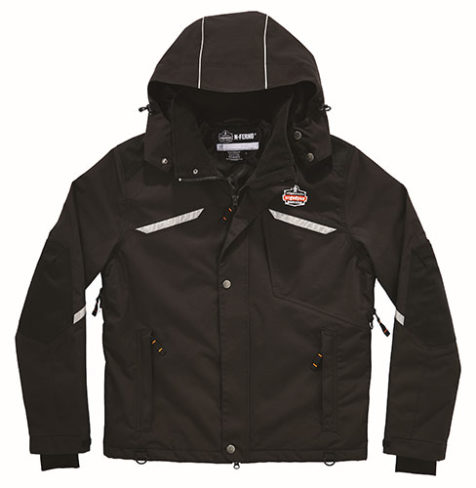Preventing cold stress
What importance does scheduling play in the prevention of cold stress?

Responding is Alsie Nelson, product manager, Ergodyne, St. Paul, MN.
If you’re a safety supervisor, weather is one thing you can’t control. However, you can control your crews’ shift schedules. Often overlooked, it is an easy way to mitigate the effects of working in a cold environment.
Limiting exposure is key in the prevention of cold stress. The dangers only get worse as temperatures drop and wind speed picks up. When it comes to setting up your crew for success in these conditions, think like a hockey coach: Schedule shorter shifts to keep your crew fresh and productive. Planning for shorter shifts can include adjusting work schedules or rotations to the cold weather or plummeting temps. Scheduling shifts in the middle of the day allows you to take advantage of, typically, the warmest time of the day.
A work/break schedule based on air temperature and wind speed is a smart tool for determining the number and length of work breaks needed during the course of a shift.
These administrative controls will help to reduce the physical demands on workers and, in the end, increase productivity and worker safety. When none of the aforementioned options is viable, adding relief workers can more effectively distribute workload.
Dehydration
As counterintuitive as increasing productivity with shorter shifts sounds, so does the need for staying hydrated while working in the cold. Nonetheless, the fact is dehydration is as common in winter months as it is in summer months because cold weather tends to move body fluids from your extremities to your core, increasing your urine output and adding to dehydration.
Just because you’re not sweating as much as you would in the blazing heat of July doesn’t mean you’re not losing fluids. In fact, you literally can see it leaving your body when temps hit freezing and your breath becomes visible.
A dehydrated body is more susceptible to common colds and flu, which are more prevalent in winter. So, don’t rely on thirst to tell you when you need to drink in a cold climate.
Wind chill
There are two sets of factors when considering the causes of cold stress on the body. The first is personal factors. The second includes environmental factors, such as air temperatures, wind speed, dampness of the air and contact with cold surfaces.
A cold environment forces the body to work harder to maintain its temperature. Cold ambient air temperature, water and snow all draw heat from the body. High wind speeds and dampness work to accelerate heat loss.
OSHA does not have a regulation regarding cold stress, nor does it have a special initiative similar to its heat stress campaign. Additionally, no states have adopted a cold stress standard. If a cold stress incident occurs, however, agencies will fall back on the General Duty Clause and issue citations based on the parameters: “… pursuant to Section 5(a)(1) of the OSH Act, employers must provide their employees with a workplace free from recognized hazards likely to cause death or serious physical harm.”
Editor's note: This article represents the independent views of the author and should not be construed as a National Safety Council endorsement.
Post a comment to this article
Safety+Health welcomes comments that promote respectful dialogue. Please stay on topic. Comments that contain personal attacks, profanity or abusive language – or those aggressively promoting products or services – will be removed. We reserve the right to determine which comments violate our comment policy. (Anonymous comments are welcome; merely skip the “name” field in the comment box. An email address is required but will not be included with your comment.)

